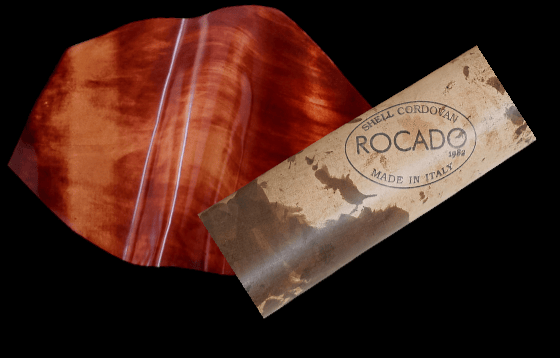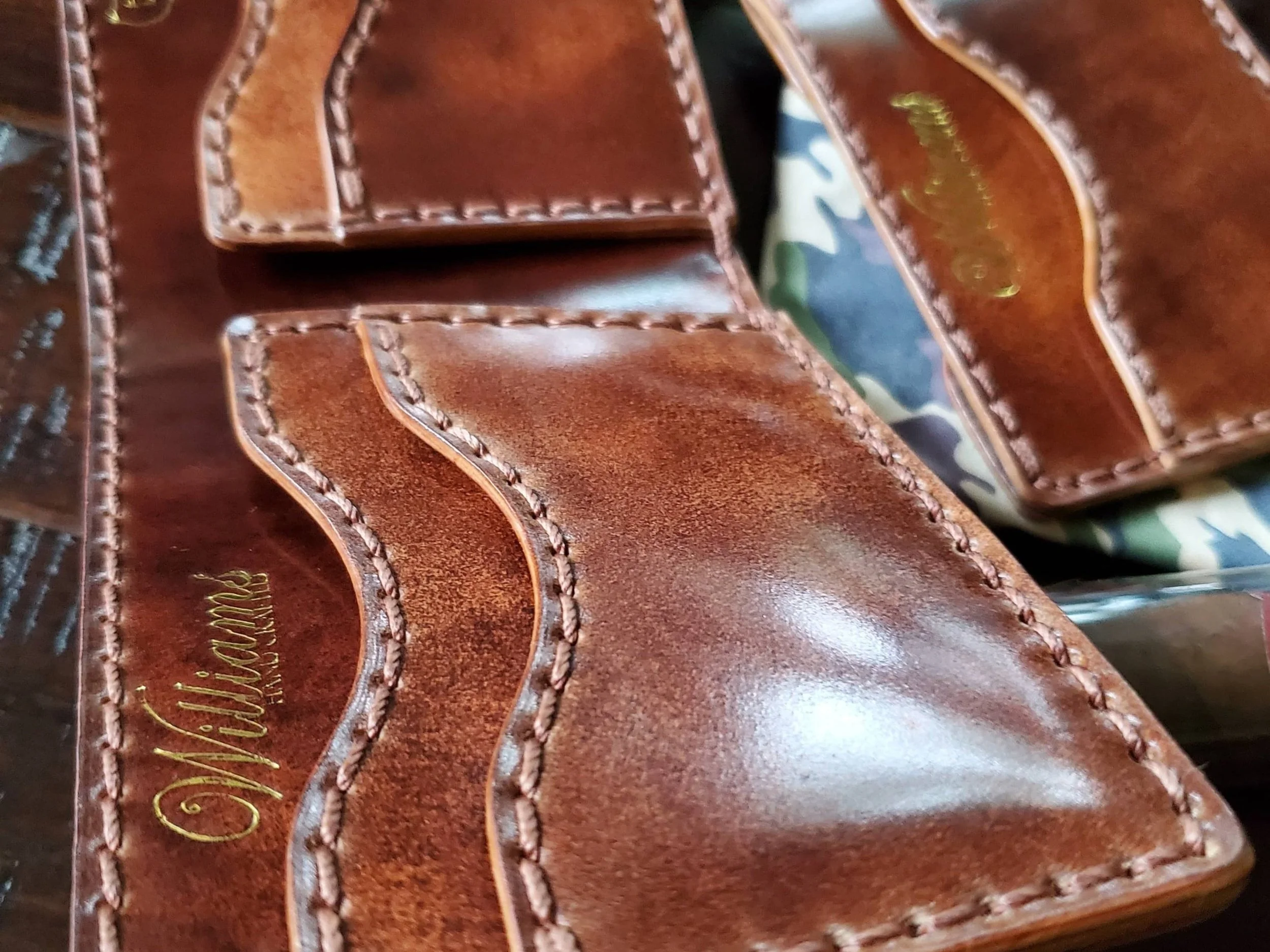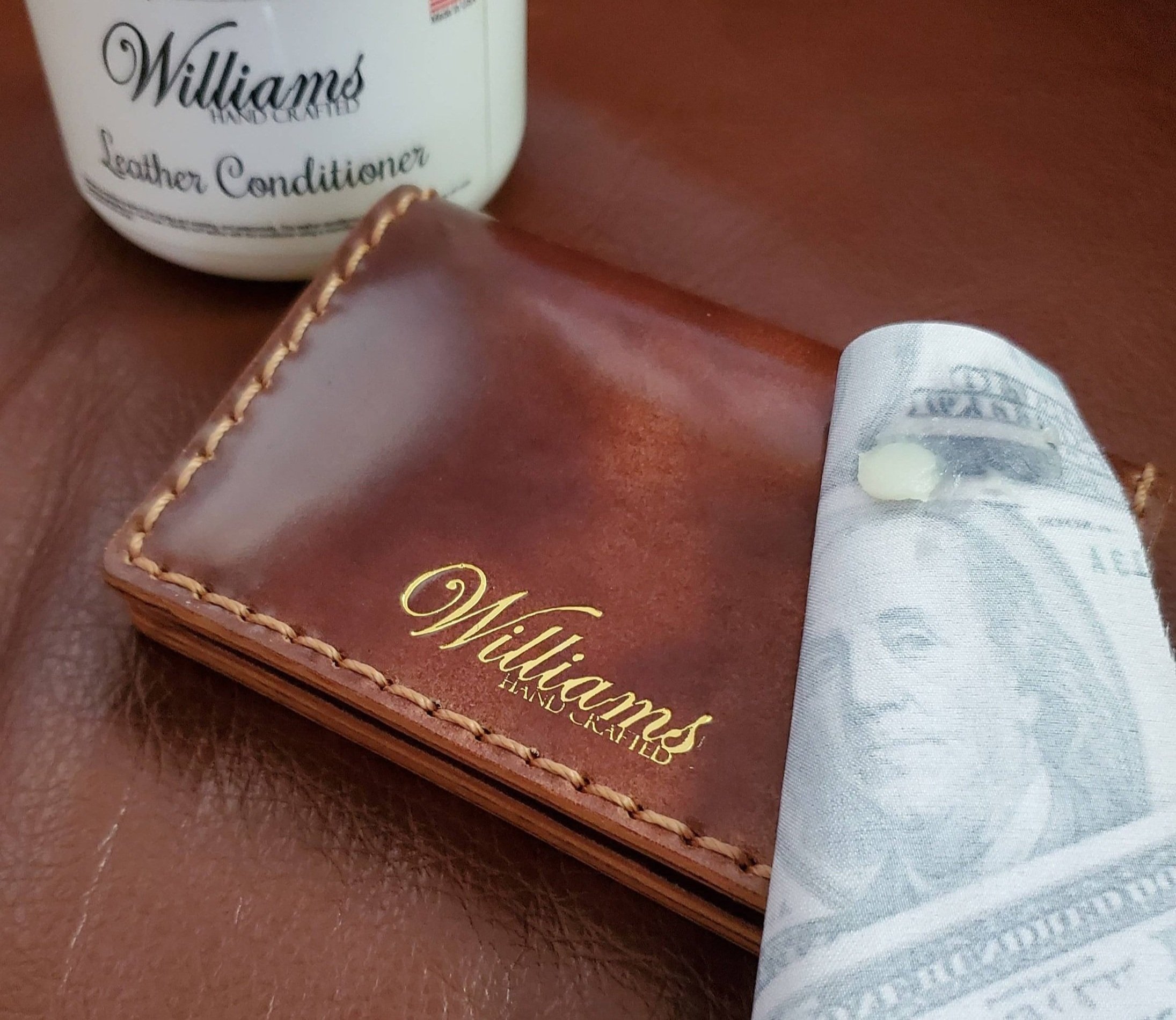What is Shell Cordovan leather?
Shell cordovan leather is a distinctive and high-quality leather known for its smooth finish, durability, and rich patina that develops over time.
This article dives into the reasons shell cordovan is a preferred leather choice and why you should consider acquiring a shell cordovan leather item. The allure and resilience of this leather represent the pinnacle of leather treasures. Shell cordovan can be finished with a mirror-like shine or a more robust texture, providing additional grip when handled.
The history of Shell Cordovan leather
Shell cordovan leather has a rich history, originating from 7th-century Spain. Renowned for its remarkable durability and distinctive non-creasing feature, it is a coveted material for premium footwear, wallets, and watch straps. Named after Cordoba, Spain, where the Visigoths and later the Moors first crafted it, shell cordovan initially found use in barber shops as razor strops, thanks to its smooth texture. Its recent surge in popularity for fashion accessories is attributed to its aesthetic appeal.
Crafted from the dense fibrous tissue under a horse's hide, shell cordovan undergoes an intensive production process to achieve its signature smoothness and flexibility. Its resistance to water, stretching, and unique rippling effect instead of creasing, ensures enduring quality and a gracefully aging patina. These characteristics render shell cordovan leather items not just luxurious but also wise long-term acquisitions. For those passionate about leatherwork and ethical sourcing, the traditional and sustainable production methods of shell cordovan leather are particularly noteworthy.
What makes shell cordovan leather special?
Shell cordovan leather originates from a distinct part of horsehide known as the "cordovan" or "shell," found on the horse's rump. This section is characterized by its dense and fibrous nature, which contributes to the leather's notable strength and durability. The texture of shell cordovan is tightly woven, dense, and smooth, consisting mainly of collagen and elastin fibers. The tanning process for shell cordovan is vegetable-based and exceptionally lengthy, taking a minimum of six months. This slow tanning approach ensures that the vegetable liquors thoroughly saturate the dense material. Following the tanning phase, the leather undergoes a "hot stuffing" treatment with greases and oils and is then manually oiled and glazed, resulting in its signature glossy finish. Shell cordovan's resistance to creasing makes it a preferred material for crafting shoes, wallets, and other personal accessories that benefit from smooth edges and curves.
Proper care of shell cordovan leather
Proper maintenance of shell cordovan leather goods is crucial for preserving their elegance and durability. To remove surface dirt or debris, gently wipe with a soft, dry cloth, preferably silk fabric. For thorough cleaning, opt for a leather cleaner designed specifically for shell cordovan, steering clear of any harsh chemicals or rough cleaners. To keep the leather moisturized and prevent it from drying, condition your items with an organic leather balm or a conditioner made for cordovan leather after every 10-15 uses. It's best to let the conditioner absorb for a minimum of 10 minutes, though leaving it on overnight is ideal.
Regular brushing with a horsehair brush will keep the leather shiny and dust-free, especially after cleaning and conditioning. To avoid discoloration, store your leather goods away from heat and direct sunlight. Achieving a mirror finish on shell cordovan leather is easier compared to grain leather due to its lack of pores. For achieving a high gloss, apply a firmer paste or wax polish, followed by a High Shine or Mirror Gloss product. With its robust nature, shell cordovan leather can develop a rich patina over time. Consistent care will amplify its inherent characteristics, ensuring that your leather items mature beautifully.
What are the disadvantages of shell cordovan leather?
Shell cordovan leather is prized for its durability and quality, yet it has its drawbacks. It tends to be stiffer and thicker than other leathers, which can be a disadvantage. Although generally water-resistant, shell cordovan is prone to staining and damage if not correctly cared for or if it becomes overly wet. Its lengthy tanning process and scarcity contribute to a higher cost for shell cordovan items compared to other leather goods. Additionally, it necessitates specific care products to preserve its unique appearance and is susceptible to damage from excessive use of conditioners or creams.
Tanneries that produce shell cordovan leather
Globally, renowned tanneries have gained recognition for their production of shell cordovan leather, each employing distinctive techniques and recipes. The Horween Leather Company, situated in Chicago, USA, stands as one of the oldest and most reputable tanneries, celebrated for its superior shell cordovan leather. In Italy, Rocado is renowned for its specialization in shell cordovan, upholding traditional techniques and artisanship. These tanneries are lauded for their dedication to quality and adherence to the traditional tanning processes that impart the distinctive qualities of shell cordovan leather. For those interested in acquiring shell cordovan leather goods, these tanneries are distinguished sources, committed to ethical and sustainable practices.
Acquiring a shell cordovan leather good can be a wise investment for several reasons
The enduring appeal of shell cordovan lies in its remarkable longevity. Known for its dense structure and high oil content, shell cordovan leather boasts an ability to endure years of wear while showing minimal signs of aging. Its timeless elegance is another hallmark; the material's classic and sophisticated appearance remains stylish across decades. As shell cordovan ages, it develops a rich patina that enhances its beauty, ensuring that each item is distinctively its own. Moreover, its resilience is noteworthy; it resists water, stretching, and creasing, thus preserving its shape and finish through regular use. The craftsmanship involved in creating shell cordovan products often involves handcrafting, showcasing an artisanal quality that stands in stark contrast to mass-produced items. Additionally, the ethical and sustainable tanning process of shell cordovan aligns with the values of the environmentally conscious, offering a product with a reduced ecological footprint.
For those passionate about leather crafting who prioritize quality, sustainability, and craftsmanship, shell cordovan is not merely a purchase but an investment in a material that represents these values. It is a selection that reflects a dedication to excellence and a taste for the finer things in life.




